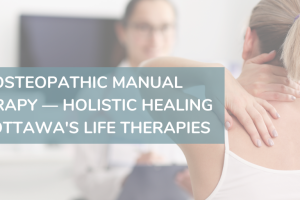Holistic Healing: Osteopathy’s Role in Your Pursuit of Healthy Living

Understanding Holistic Healing
Holistic healing emphasizes the interconnectedness of the mind, body, and spirit. It operates on the principle that optimal health isn’t merely the absence of illness but a balance of all aspects of a person’s life. For instance, someone facing chronic back pain may also be experiencing stress, which could exacerbate their condition. Holistic practices often focus on:
- Holistic Healing: Osteopathy’s Role in Your Pursuit of Healthy Living
- Understanding Holistic Healing
- Overview of Osteopathy
- The Principles of Osteopathy
- Holistic Approach to Health
- Role of Osteopathic Manipulative Treatment
- Benefits of Osteopathy
- Pain Management
- Improving Body Function
- Conditions Treated by Osteopathy
- Back Pain
- Headaches and Migraines
- Osteopathy Techniques
- Soft Tissue Manipulation
- Joint Mobilization
- Osteopathy vs. Conventional Medicine
- Comparison in Treatment Approaches
- Complementary Relationship
- Finding an Osteopath
- Qualifications to Look For
- Choosing the Right Practitioner
- Integrating Osteopathy into Your Wellness Routine
- Osteopathy as Preventative Care
- Supporting Overall Health
- Case Studies: Osteopathy Success Stories
- Personal Testimonials
- Scientific Evidence
- Osteopathy's Role in Mental Wellbeing
- Stress Management
- Anxiety Relief
- Physical well-being: Regular exercise and nutrition.
- Mental clarity: Mindfulness and meditation.
- Emotional balance: Therapy and support systems.
Integrating these elements can lead to a more profound state of health.
Overview of Osteopathy
Osteopathy is a branch of holistic medicine that aligns perfectly with these principles. Developed in the late 19th century, it was founded on the idea that the body can heal itself if the skeleton, muscles, and connective tissues are properly aligned and functioning. Osteopathy is unique because it incorporates:
- A thorough understanding of anatomy.
- Hands-on techniques to promote healing.
- A focus on overall wellness, rather than just treating symptoms.
By considering the whole person, osteopaths strive to empower individuals to achieve better health outcomes and quality of life.
The Principles of Osteopathy
Holistic Approach to Health
At the heart of osteopathy lies its holistic approach to health. This philosophy recognizes that every individual is a complete system, where physical, emotional, and lifestyle factors play crucial roles in overall wellness. When an osteopath works with a patient, they don’t just address the immediate discomfort. Instead, they look at the person as a whole. For example, if a client comes in with chronic shoulder pain, the osteopath may also inquire about their stress levels, sleep quality, and even dietary habits. This comprehensive view leads to better tailored treatment plans that often include:
- Lifestyle recommendations.
- Nutritional guidance.
- Stress relief techniques.
Role of Osteopathic Manipulative Treatment
Osteopathic Manipulative Treatment (OMT) is a cornerstone of osteopathy. Through hands-on techniques, osteopaths aim to restore function, alleviate pain, and promote healing. Some common OMT techniques include:
- Soft tissue manipulation: Relaxing tense muscles to improve circulation.
- Joint mobilization: Enhancing joint movement and flexibility.
These techniques are designed to encourage the body’s natural ability to heal itself, often leading to faster recovery and improved health outcomes. Whether it’s through gentle stretching or precise adjustments, OMT plays a vital role in the holistic healing journey.
Benefits of Osteopathy
Pain Management
One of the most notable benefits of osteopathy is its effectiveness in pain management. Many individuals turn to osteopathy when traditional pain relief methods fall short. By addressing the root cause of discomfort rather than just masking symptoms, osteopathy helps patients find lasting relief. For example, a friend suffered from persistent lower back pain due to poor posture at work. After a few sessions with an osteopath, she experienced significant reduction in discomfort, thanks to targeted manipulative treatments and advice on corrective exercises. Key pain management benefits include:
- Reduction of muscle tension.
- Decreased reliance on medication.
- Enhanced mobility and flexibility.
Improving Body Function
Beyond managing pain, osteopathy plays a crucial role in improving overall body function. Osteopaths focus on enhancing the body’s mechanics, which can lead to better performance in daily activities. Consider this: regular osteopathic treatment can help with:
- Improved posture, reducing strain on muscles and joints.
- Better circulation, leading to increased energy levels.
- Enhanced coordination and balance, especially in older adults.
By helping the body function optimally, osteopathy lays the foundation for overall health and wellness, allowing individuals to lead more active and fulfilling lives.
Conditions Treated by Osteopathy
Back Pain
Back pain is one of the most common ailments treated by osteopaths. Whether it stems from poor posture, muscle strain, or injury, osteopathy offers effective relief. Through a combination of OMT and personalized exercise plans, osteopaths can target the underlying issues contributing to discomfort. Take, for instance, a colleague who experienced debilitating back pain after long hours at her desk. After several osteopathic sessions focused on alignment and strengthening exercises, she found not only relief but also improved posture, preventing future problems. Key treatment benefits for back pain include:
- Alleviation of muscle tightness.
- Restoration of spinal alignment.
- Enhanced range of motion.
Headaches and Migraines
Headaches and migraines are also frequently addressed in osteopathic care. Many people are often surprised to learn that tension in the neck and spine can contribute significantly to headaches. Osteopaths utilize gentle techniques to relieve tension and restore balance, often resulting in noticeable improvement. For example, a friend who struggled with frequent migraines found substantial relief after a series of osteopathic treatments that focused on her neck alignment and muscle relaxation. Key advantages of osteopathic treatment for headaches include:
- Reduction of frequency and intensity.
- Improved blood flow to the head.
- Better stress management.
Through these tailored approaches, osteopathy provides hope and healing for those suffering from back pain and headaches.
Osteopathy Techniques
Soft Tissue Manipulation
One of the core techniques in osteopathy is soft tissue manipulation. This approach focuses on enhancing blood circulation, reducing muscle tension, and promoting relaxation through various hands-on techniques. For instance, during a recent visit, an osteopath gently massaged the tense muscles in my back and shoulders, leading to immediate relief and a sense of relaxation. This technique not only alleviates pain but also helps improve overall muscle function and elasticity. Benefits of soft tissue manipulation include:
- Increased blood flow: Enhancing nutrient delivery and waste removal.
- Reduction of soreness: Making recovery from injuries faster and more comfortable.
- Improved mobility: Allowing for greater flexibility in daily activities.
Joint Mobilization
Another essential technique is joint mobilization, which targets the joints to restore range of motion and reduce stiffness. By applying controlled movements to specific joints, osteopaths help facilitate healing and improve physical function. A personal experience highlights this technique: after suffering from limited motion in my knee post-injury, joint mobilization sessions helped restore flexibility and strength, enabling me to return to my usual activities quicker than expected. Key benefits of joint mobilization include:
- Enhanced joint function: Making everyday movements easier.
- Pain relief: Reducing discomfort through improved joint mechanics.
- Prevention: Lowering the risk of future injuries.
Together, these techniques form the foundation of osteopathic practice, promoting recovery and overall health.
Osteopathy vs. Conventional Medicine
Comparison in Treatment Approaches
When comparing osteopathy to conventional medicine, it’s essential to understand their different perspectives on health. Conventional medicine often focuses on diagnosing specific conditions and prescribing medications or surgical interventions to address symptoms directly. In contrast, osteopathy adopts a holistic viewpoint, considering the body as an integrated whole. For example, while a conventional doctor might prescribe pain medication for back pain, an osteopath would aim to identify and treat the underlying issues, such as muscle tension or misalignment. Key differences include:
- Focus: Conventional medicine targets specific diseases; osteopathy emphasizes overall health.
- Methods: Conventional treatments often rely on medications; osteopathy employs hands-on techniques.
- Perspective: Osteopathy incorporates lifestyle factors alongside physical treatment.
Complementary Relationship
Despite these differences, osteopathy and conventional medicine can complement each other effectively. In many cases, patients benefit from a combination of both approaches. For instance, after undergoing surgery, a friend utilized osteopathic treatments to aid recovery and improve mobility, demonstrating how the two fields can work in tandem. Benefits of this complementary relationship include:
- Comprehensive care: Addressing both immediate symptoms and long-term wellness.
- Increased options: Providing patients with various treatment pathways.
- Enhanced recovery: Supporting healing through diverse strategies.
Together, these modalities offer a robust framework for achieving optimal health outcomes.
Finding an Osteopath
Qualifications to Look For
Finding the right osteopath can be a crucial step toward achieving better health. When searching for a qualified practitioner, it’s important to check their credentials. Look for osteopaths who have completed a recognized degree program and are registered with the relevant regulatory body in your area. Essential qualifications to consider include:
- Degree: A Bachelor’s or Master’s in Osteopathy.
- Licensure: Registration with an official professional body, such as the General Osteopathic Council (GOsC) in the UK.
- Continuing education: Ongoing training to stay updated with the latest techniques and practices.
These qualifications ensure that your osteopath is well-equipped to provide safe and effective care.
Choosing the Right Practitioner
Once you’ve identified potential practitioners, the next step is finding the right fit for you. A great way to assess compatibility is by scheduling a consultation. During this initial visit, consider factors such as:
- Communication style: Are they approachable and attentive?
- Treatment philosophy: Do they align with your holistic health views?
- Experience: Have they treated patients with your specific condition?
Personal recommendations from friends or family can also guide your choice. Additionally, reading online reviews can provide insight into other patients’ experiences. By taking the time to find the right osteopath, you can embark on a healing journey that’s tailored to your needs.
Integrating Osteopathy into Your Wellness Routine
Osteopathy as Preventative Care
Integrating osteopathy into your wellness routine can be a game changer, especially when viewed through the lens of preventive care. Rather than waiting for an injury or illness to occur, seeing an osteopath regularly can help maintain optimal body function and prevent future issues. For instance, a family member started visiting an osteopath for routine check-ups and has noticed fewer incidents of back strain, even during her busy workdays. Some key aspects of preventative care in osteopathy include:
- Regular assessments: To identify and address potential issues early.
- Tailored exercise recommendations: Promoting strength and flexibility.
- Lifestyle advice: Encouraging healthy habits that support long-term wellbeing.
Supporting Overall Health
Beyond prevention, osteopathy can significantly enhance overall health. By addressing physical discomfort, osteopathy can help relieve stress and anxiety, leading to a more balanced life. In my own experience, after including osteopathic treatment in my routine, I found that my energy levels improved, and I felt more capable of handling daily challenges. The principles of osteopathy support overall health by:
- Boosting immune function: Through improved circulation and reduced stress.
- Enhancing sleep quality: Alleviating discomfort often translates to better rest.
- Encouraging mental clarity: Reduced tension can lead to improved focus and productivity.
Incorporating osteopathy into your wellness routine can truly be an investment in a healthier, happier life.
Case Studies: Osteopathy Success Stories
Personal Testimonials
Hearing from those who have benefited from osteopathy can truly illustrate its impact. One individual I spoke with, Sarah, had been struggling with persistent shoulder pain for years. After just a few sessions with an osteopath, she experienced substantial relief and regained her ability to lift her child without discomfort. Common themes in personal testimonials often include:
- Reduced pain levels: Many patients report immediate and lasting decreases in discomfort.
- Improved quality of life: Individuals share how osteopathy has helped them return to activities they love.
- Empowerment through education: Patients appreciate learning about their bodies and how to maintain health.
Scientific Evidence
Beyond personal stories, scientific evidence supports the efficacy of osteopathy. Research has shown positive outcomes for various conditions, including chronic back pain and migraines. A study published in the “Journal of Manipulative and Physiological Therapeutics” found that osteopathic care significantly improved patients’ pain and functional outcomes over time. Some key findings include:
- Reduction in pain intensity: Patients undergoing osteopathic treatment reported greater relief than those receiving conventional care alone.
- Enhanced physical function: Improved mobility and daily functioning were documented in several studies.
These success stories, both personal and academic, clearly demonstrate the effectiveness of osteopathy and highlight its role as a valuable health intervention.
Osteopathy’s Role in Mental Wellbeing
Stress Management
Osteopathy is not just about physical health; it also plays a vital role in mental wellbeing, particularly in managing stress. Stress can manifest physically, causing tension in muscles and affecting posture. During my own osteopathic sessions, I’ve experienced soothing techniques that helped release built-up tension and create a sense of calm. Some effective stress management benefits of osteopathy include:
- Relaxation techniques: Osteopaths often use gentle manipulations that promote a relaxation response in the body.
- Improved circulation: Enhanced blood flow can help reduce physical symptoms of stress, like headaches or muscle tightness.
- Holistic assessments: Practitioners can guide lifestyle changes that support stress reduction.
Anxiety Relief
In addition to managing stress, osteopathy can aid in anxiety relief. Many patients report feeling more grounded and balanced after treatment sessions. A friend of mine turned to osteopathy during particularly anxious times at work. She found that the hands-on approach allowed her to connect more with her body, offering comfort and clarity amidst chaos. Benefits for anxiety relief include:
- Mind-body connection: Osteopathic treatments encourage awareness of bodily sensations, helping patients feel more anchored.
- Reduction of physical symptoms: Many find relief from anxiety-related tension or pain.
- Supportive environment: The empathetic relationship with the osteopath fosters a trust that can alleviate feelings of isolation.
By weaving osteopathy into personal wellness routines, many individuals find bolstered support for both their physical and mental well-being.





